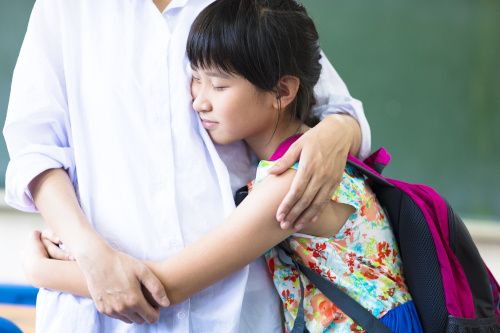We’ve all been through a traumatic experience in the last year. In a typical year, school is the only safe place for many students, and it is often the place where abuse or other trauma is recognized and help provided. But during remote learning, those children suddenly had no safe place to go and no adults to recognize the danger they were in and offer a lifeline.
As children return to school this fall, here’s how educators can spot those who may need mental health support, and a few suggestions for offering help.
Adverse childhood experiences
According to a study by the CDC and Kaiser Permanente, 10 adverse childhood experiences (ACEs) include the following:
- Physical, emotional. or sexual abuse;
- Physical or emotional neglect; and
- Household dysfunction (mental illness, incarcerated relatives, substance abuse, divorce, and violent treatment towards a parent).
According to the CDC, many of us will suffer ACEs: 61 percent of adults had at least one ACE, and 16 percent experienced four or more. Recent studies, including the Philadelphia ACE Project, have explored community-level trauma and now include witnessing violence, experiencing discrimination, adverse neighborhood experiences, being bullied, and living in foster care as additional ACEs.
Researchers are exploring the impact of living in communities with broad exposure to adverse experiences, and most certainly, the pandemic of the past year added yet another layer of complexity. Children living in families where abuse, neglect, and household dysfunction were present before the pandemic may have experienced even more trauma throughout the quarantine due to the isolation that left them without opportunities to contact positive adults and form relationships with a support system outside the home. Families with members suffering from mental illness may have found it difficult to continue treatment or find support. Families living in communities that also experience significant levels of adversity may have had even more exposure to ACEs.
The good news is that researchers are learning how individuals, families, and communities can build resiliency and how positive childhood experiences (PCEs) counteract ACEs. While we all many children have suffered greatly, collectively, we can focus on rebuilding our lives with resiliency and a focus on positive experiences. These are particularly essential for our youngest learners as they come back to school this fall.
Recognizing students struggling with ACEs
Teachers can support students and families by connecting them with resources to provide a network of support and build resilience. Creating trauma-informed classroom environments will be essential for all students as schools begin again this fall. These practices build upon strong classroom cultures that prioritize relationships, predictable routines, and safety. Talking with children about how we make choices so that all classmates feel safe is essential.
Educators need the training to learn how to watch for signs of ACEs so that particularly vulnerable children and families can get the help they need. Beyond traditional signs of physical abuse, teachers can watch for ongoing emotional outbursts, destroying property, distraction that impacts learning, an inability to concentrate, sleepiness, or constantly being in the “fight or flight” mode.
What can a teacher do?
Each state has laws related to reporting abuse, and schools have specific guidelines for how teachers should react if they suspect a child is experiencing ACEs. Local rules and procedures need to be shared during training so teachers are clear on their obligation and the process to report suspected abuse. Leaders should build relationships with community organizations so they can work together to connect families with resources. One way to counteract ACEs is to create support networks that build resiliency preemptively. Teachers can share resources with all families in their class and help families get to know each other.
Forming these connections is helpful because emotions impact learning. Classroom environments that prioritize the use of mindfulness to calm the mind and body can support all learners. These practices are beneficial for any child experiencing toxic stress, and helping children feel safe primes their brain to create space for learning. Practicing focusing and building brain breaks into a predictable classroom routine are helpful ways to provide support for any child who may be experiencing the stress associated with ACEs.
To have an immediate impact, teachers can focus on creating PCEs for their students. Researchers have found that PCEs can counteract ACEs, and teachers have an excellent opportunity to be the adult who provides a daily safe environment for a child. The PCE list includes the following:
- Enjoyment at school;
- Adults to offer support or advice;
- Good friendships;
- Learning to feel comfortable with yourself; and
- Predictable routines.
Teachers have six hours a day to create these experiences and the lifetime of difference they can inspire. In a future article, my colleague Kim Fischer will talk about creating PCEs in more depth.
- 7 reasons to ditch recipe-style science labs - November 22, 2024
- As a paradeducator, here’s how I use tech to help neurodivergent students gain agency - November 22, 2024
- 5 ways school districts can create successful community partnerships - November 21, 2024


